In industrial material processing, screening equipment is a key link, and swing screens stand out with their unique advantages. This article focuses on its core role, deeply analyzes its application in multiple industries, and explores technological advantages and development trends, providing reference for relevant practitioners.
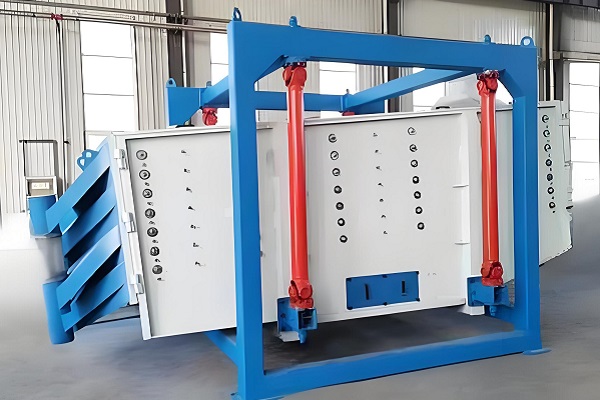
The core function of the swing screen
As an efficient and fine screening equipment, the swing screen plays an irreplaceable role in the field of material processing with its unique swing vibration principle. Its core functions are mainly reflected in the following aspects:
1. High precision screening
The swing screen is driven by an eccentric shaft to produce a swing trajectory similar to manual screening, which can accurately separate materials of different particle sizes. Compared to traditional vibrating screens, its screening trajectory is softer and has a wider coverage range, which can effectively avoid material agglomeration caused by severe vibration, allowing fine particle materials to fully contact the screen mesh, and the screening accuracy can reach over 95%. For example, in flour processing, different fineness of flour can be accurately screened to meet the strict requirements for raw material accuracy in high-end food production, ensuring consistency in taste and quality of subsequent processed products.
2. Efficient grading processing
For materials that require multi-level separation, the swing screen can achieve one-time classification through the design of multiple layers of mesh screens. It can classify materials into 2-6 different grades based on their particle size differences, greatly improving grading efficiency. Taking plastic particle production as an example, from raw materials to finished products, the swing screen can quickly separate qualified particles, large particle size impurities, and fine powder, reducing subsequent rework steps and making the production process smoother. The processing capacity can reach 1-50 cubic meters per hour, suitable for production needs of different scales.
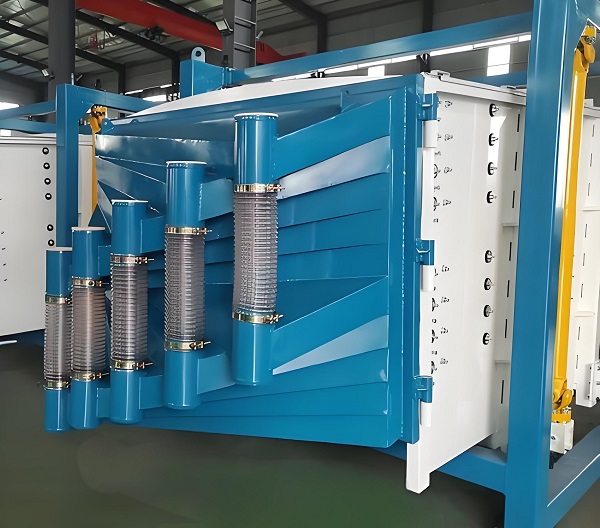
3. Material impurity removal and purification
In many industries, the purity of raw materials directly affects product quality, and swing screens can efficiently remove impurities from materials. Its special swinging motion can evenly distribute materials on the screen surface, and impurities are accurately separated due to differences in particle size or density. In the processing of traditional Chinese medicine decoction pieces, impurities such as sediment and debris can be effectively screened out to ensure the purity of the medicinal materials, while avoiding the loss of effective ingredients due to excessive vibration and improving the utilization rate of medicinal materials.
4. Highly adaptable material handling
Swing screens have strong adaptability to materials, and can effectively screen dry powders, granular materials, and materials with certain viscosity. By adjusting the sieve aperture, swing frequency, and amplitude, screening parameters can be optimized for materials with different characteristics. For example, in fertilizer production, when facing fertilizer particles that are prone to moisture absorption and clumping, increasing the amplitude and reducing the oscillation frequency appropriately can break the clumped materials, while ensuring that qualified particles pass through the sieve smoothly, avoiding sieve clogging, and ensuring continuous and stable production.
The main application areas of swing screens
With advantages such as precise screening and efficient grading, swing screens are widely used in various industries such as chemical, food, mining, pharmaceutical, and building materials, providing strong support for optimizing production processes and improving product quality in various industries.
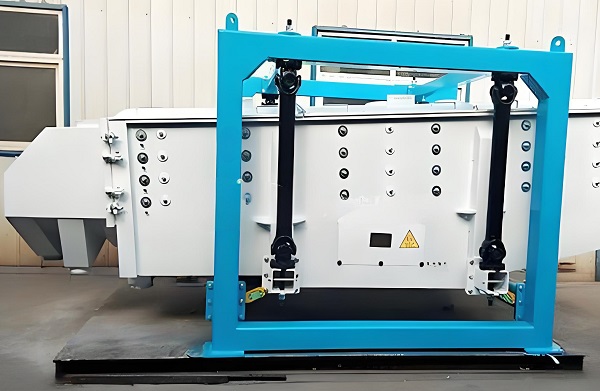
1.Chemical industry
The chemical industry has a wide variety of materials, many of which have characteristics such as corrosiveness, flammability, and explosiveness. The safety and stability requirements for screening equipment are extremely high, and swing screens are particularly widely used in this field.
In the field of plastic chemical engineering, it is commonly used for screening and grading plastic resins and plastic particles. For example, in the production of polyethylene resin, it is necessary to separate resin particles of different sizes to ensure the density uniformity of subsequent injection molded products. The swing screen is made of stainless steel material, which can withstand the high temperature environment during resin processing. At the same time, its sealed design can effectively prevent resin powder leakage, avoiding environmental pollution and material waste. In addition, in rubber production, rubber additives (such as vulcanizing agents and accelerators) can be finely screened to remove impurities, ensure that the additives are fully mixed with rubber raw materials, and improve the elasticity and wear resistance of rubber products.
In the field of fine chemicals, it is used for screening and purifying pigments and dyes. The uniformity of pigment powder particle size directly affects the color and coverage of the coating. The swing screen can accurately screen out pigment powder that meets the requirements, remove coarse particle impurities, and ensure stable quality of the coating product. At the same time, for some pigment powders that are prone to flying, the swing screen can be equipped with a dust removal device to reduce dust pollution and ensure the health of operators.
2. Food industry
The food industry has strict hygiene standards and precision requirements for material screening. Swing screens, with materials that meet food grade standards and efficient screening capabilities, have become key equipment in food production.
In the field of grain processing, it is used for cleaning and grading grains such as wheat, rice, and corn. For example, in the flour processing process, the first step is to remove impurities such as stones, weeds, and soil from the wheat through a swing screen. Then, the wheat is graded and the wheat particles of different sizes are separated, so that the subsequent grinding process can adjust the grinding parameters according to the size of the wheat grains to improve the flour yield and quality. In addition, in rice processing, broken rice and intact rice grains can be separated to meet different consumer needs, while removing bran powder from rice and improving the appearance quality of rice.
In the field of food additives, it is used for screening powdered food additives such as sugar powder, starch, and milk powder. For example, in the production of milk powder, it is necessary to screen the spray dried milk powder to remove caked milk powder particles, ensure the fluidity of milk powder, and facilitate subsequent packaging and storage. The swing screen is made of food grade 304 stainless steel material, and all parts in contact with the material have been polished to ensure no hygiene dead corners, meeting the hygiene standards of the food industry and effectively avoiding material contamination. At the same time, its gentle swinging motion can prevent the milk powder from layering due to excessive vibration, ensuring that the nutritional content of the milk powder is uniform.
Used for grading and screening snacks such as potato chips and nuts in the production of snack foods. For example, in the production of potato chips, it is necessary to grade them according to their size and thickness to ensure even heating during the frying process and avoid overcooking or undercooking. The swing screen can be designed with multiple layers of mesh screens to achieve multi-level separation at once, improving production efficiency. At the same time, its flexible screening method can reduce potato chip crushing and material loss.
3. Mining industry
The mining industry has a large material processing volume, high material hardness, and high impurity content, which requires high wear resistance and processing capacity of screening equipment. Swing screens play an important role in mineral screening and purification.
In the field of metal mining, it is used for coarse and fine screening of minerals such as iron ore, copper ore, and gold ore. For example, in iron ore processing, the mined iron ore contains a large amount of waste rock and soil. Firstly, it needs to be sieved through a swing screen to remove large waste rocks and reduce the load on subsequent crushing equipment. Subsequently, the crushed iron ore is finely screened to separate iron concentrates of different particle sizes to meet the requirements of different smelting processes. The sieve mesh of the swing screen is made of high-strength and wear-resistant materials (such as manganese steel), which can withstand the impact and friction of iron ore, prolong the service life of the sieve mesh, and its large processing capacity design can adapt to the large-scale production needs of the mining industry. It can process tens of cubic meters of iron ore materials per hour.
In the field of non-metallic minerals, it is used for screening and grading non-metallic minerals such as limestone, quartz sand, talc powder, etc. For example, in the production of quartz sand, it is necessary to divide the quartz sand into different grades according to particle size, which can be used in different scenarios such as glass manufacturing and architectural decoration. The swing screen can accurately separate quartz sand with different particle sizes of 0.1-5mm, and its screening process will not cause excessive wear to the quartz sand particles, ensuring the shape and purity of the quartz sand particles and enhancing the added value of the product. In addition, in the processing of talc powder, fine screening can be carried out to remove impurities and ensure that the fineness of talc powder meets the usage standards of industries such as cosmetics and pharmaceuticals.
4. Pharmaceutical industry
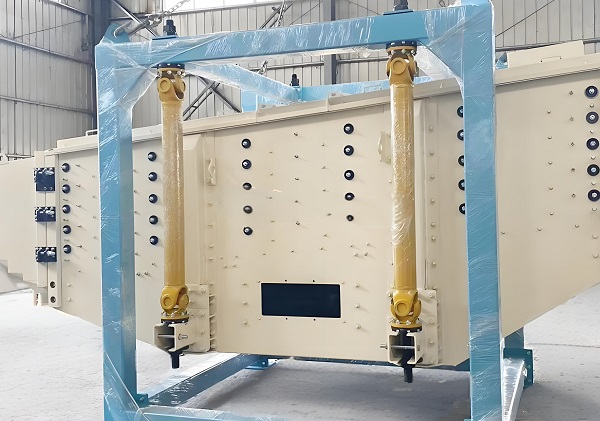
The pharmaceutical industry has extremely strict requirements for the accuracy, hygiene, and safety of material screening. Swing screens meet the high standards of pharmaceutical production through strict material selection and process design.
In the traditional Chinese medicine industry, it is used for cleaning, grading, and sieving of Chinese medicinal materials after crushing. For example, in the production of traditional Chinese medicine decoction pieces, it is necessary to screen the Chinese medicinal materials (such as Huangqi and Danggui) to remove sediment, impurities, and fragments that do not meet the specifications, in order to ensure the quality of the decoction pieces. In the processing of traditional Chinese medicine powder (such as the production of traditional Chinese medicine powder), it is necessary to finely screen the powdered medicinal materials to ensure uniform particle size, facilitate the dissolution of effective ingredients in the medicinal materials, and ensure accurate dosage of the powder. The swing screen is made of stainless steel material that meets GMP standards, and the equipment surface is polished with a mirror finish, making it easy to clean and disinfect, effectively preventing cross contamination. In addition, its sealing performance is good, which can prevent the Chinese medicine powder from absorbing moisture and deteriorating, ensuring the efficacy of the medicinal herbs.
In the field of Western medicine production, it is used for screening and pre-treatment of pharmaceutical raw materials and excipients before mixing. For example, in tablet production, it is necessary to screen the active ingredients (API) and excipients (such as fillers and adhesives) separately to remove impurities and ensure uniform particle size of raw materials and excipients, so that the ingredients can be fully mixed in the subsequent mixing process and ensure the uniformity of tablet content. At the same time, in capsule production, the capsule filling material can be screened to remove coarse particles, avoid blockage during the capsule filling process, improve production efficiency, and ensure stable capsule quality.
5. Building materials industry
The materials in the building materials industry are mostly in the form of granules or powders, and the production scale is large. Swing screens are mainly used in this field for screening and grading building materials to improve the quality of building materials products.
In cement production, it is used for screening cement raw materials and clinker. Cement raw materials are made by mixing raw materials such as limestone, clay, and iron powder in proportion. Large impurities in the raw materials need to be removed through a swing screen to ensure uniform mixing of the raw materials and improve the calcination efficiency of cement clinker. After grinding cement clinker, it is necessary to screen the finished cement product, control the cement fineness, and ensure that the setting time and strength of the cement meet the building standards. The swing screen can withstand high dust environments during cement production, and its wear-resistant mesh can withstand the friction of cement particles for a long time. At the same time, the equipment structure is simple, easy to maintain, and reduces production costs for enterprises.
In the field of ceramic production, it is used for screening and purifying ceramic raw materials such as kaolin and feldspar powder. The purity and particle size uniformity of ceramic raw materials directly affect the firing quality and appearance of ceramic products. Swing screens can accurately remove coarse particles and impurities from the raw materials, ensuring that the fineness of the raw materials meets the requirements of ceramic molding. For example, in the production of ceramic glazes, the glaze powder can be finely screened to avoid the presence of coarse particles in the glaze, which can cause defects on the surface of ceramic products and improve the aesthetics and quality of ceramic products. In addition, in the production of aerated concrete, the raw materials of aerated concrete (such as fly ash, cement, lime) can be screened to ensure uniform mixing and improve the strength and insulation performance of aerated concrete.
6. Other industries
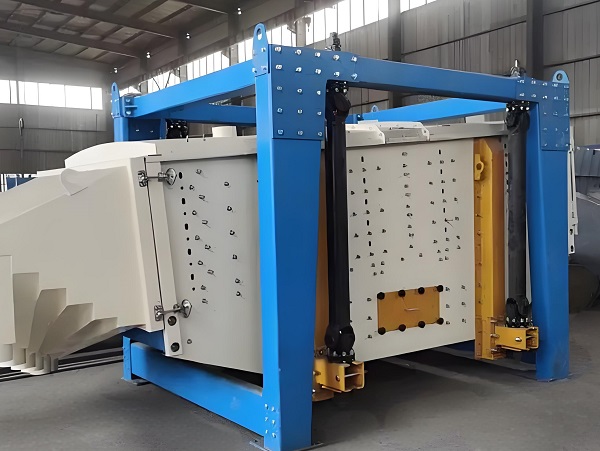
In addition to the main industries mentioned above, swing screens also have important applications in industries such as environmental protection, metallurgy, and electronics.
In the environmental protection industry, it is used for solid-liquid separation in sewage sludge treatment and screening after sludge drying. For example, in municipal sewage treatment plants, the dewatered sludge is screened to remove impurities (such as stones and plastic fragments) from the sludge, in order to facilitate subsequent sludge resource utilization (such as making organic fertilizers). The anti clogging design of the swing screen can effectively prevent sludge from adhering to the screen, ensuring screening efficiency. At the same time, its corrosion-resistant material can withstand corrosive substances in the sludge, extending the service life of the equipment.
In the metallurgical industry, it is used for screening and grading metal powders. For example, in the production of iron powder, it is necessary to separate iron powder with different particle sizes to meet the density and strength requirements of powder metallurgy products such as gears and bearings. The swing screen can accurately screen out iron powder that meets the specifications, and its gentle screening method can avoid deformation of iron powder particles, ensuring the forming quality of powder metallurgy products.
In the electronics industry, it is used for fine screening of electronic materials such as quartz sand and alumina powder. Electronic materials require extremely high purity and particle size accuracy. The swing screen adopts high-precision mesh and sealed design, which can effectively remove impurities, ensure the purity of electronic materials, and accurately control particle size, providing high-quality raw materials for the production of electronic components such as chips and capacitors.
The swing screen plays a core role in high-precision screening and is widely used in multiple industries, helping enterprises optimize processes and improve quality. Its advantages such as low consumption and easy maintenance are significant, and in the future, it will become an important support for industrial material processing in the direction of intelligent, efficient, and green development.
Save Time! Get A Detailed Quotation Quickly.
